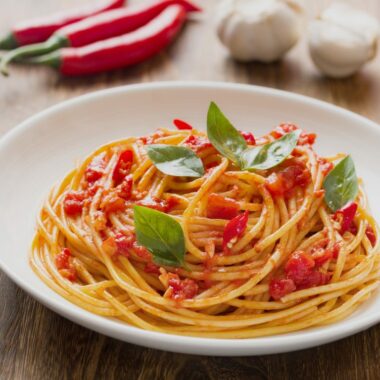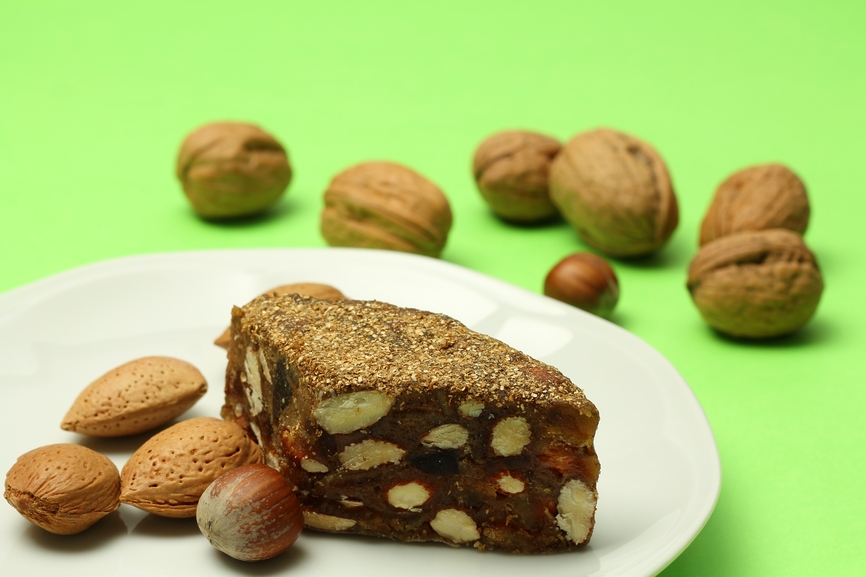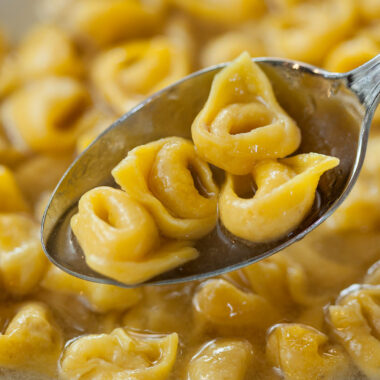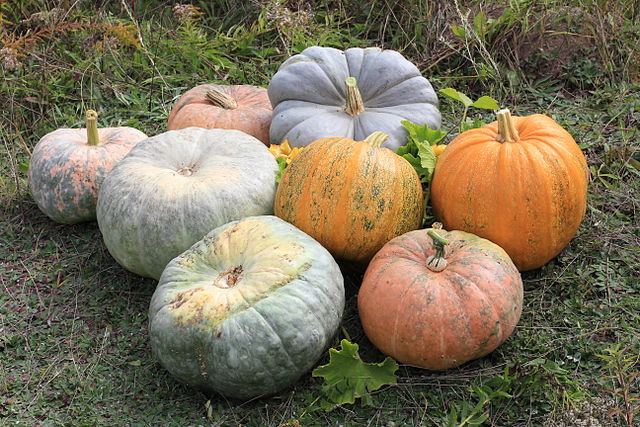Tomato: its history in Europe
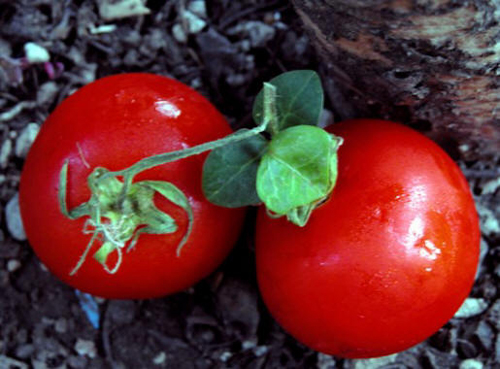 Italian tomatoes
Italian tomatoes
Without a doubt, there are millions of dishes where the tomato is one of the main ingredients, or where it is used as a base for recipes. It could be for its color and flavor, or for its versatility. And heaven knows what a long way has traveled the tomato since the times of the ancient Aztecs, to finally find itself in today’s recipes.
The tomato came to Europe along with corn, potatoes, hot peppers (peperoncino) and sweet potatoes after the Discovery of America and was introduced to Spain in the early 1500s, very likely brought by Cristoforo Colombo when returning from one of his voyages.
 A staple of Italian tables, the tomato
A staple of Italian tables, the tomato
The cultivation of the tomato plant was already common in pre-Colombian Mexico and Peru, when it was introduced to Europe by the Spaniards in the 16th century as an ornamental plant, and not as one to be consumed. It was believed to be extremely poisonous for its high content of solanine, a substance considered to be harmful to man at the time. In fact, in 1544, the Italian herbalist Pietro Matthioli, classified the tomato along with other poisonous plants, even though he admitted having heard that the fruit was fried in oil, and then eaten in some regions.
The tomato plant was originally from Chile or Ecuador, where the climate is tropical. In these countries, the plants joyously produce fruits all year round. Meanwhile, in other regions tomatoes usually produce only during the summer, when cultivated in the open.
The tomato comes form the plant family of the solanaceae. Its cousin the eggplant was, in those times, the preferred fruit in the Arabic World. Today, with the exception of Italian (because the tomato is called pomodoro), the word “tomato” is similar in all other languages, because it derived from the original Aztec word for it, or at least from a version of it. In truth, the Aztec used the term tomatl to indicate any plump fruit, and would define the “-tomatl” by adding prefixes to it. Known is the xitomatl, the prefix used to differentiate it from other similarly shaped fruits. European conquerors were lazy with learning Nahuatl, the language of the Aztecs, and some didn’t realize the importance of prefixes in their lexicon. So it happened then, that when the Aztecs’ xitomatl came to Europe through the Spaniards, it was simply called “tomate,” the Spanish-like version of tomatl.
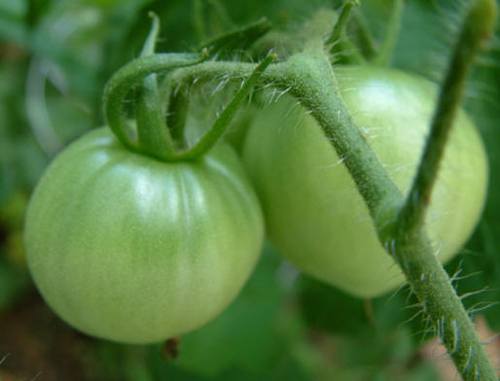 Green tomatoes
Green tomatoes
Tomatoes spread through the whole of the Mediterranean, as the climate was favorable to their growth, especially in Italy, in the Nocerino-Sarnese region between Naples and Salerno. The oldest Italian recipe including the use of tomato is the “Salsa di Pomodoro alla Spagnola,” literally Spanish Tomato Sauce, which showed up in 1692.
The People of Naples and the Importance of the Tomato
The tomato breathes throughout Neapolitan Gastronomy, and is largely diffused in all the world for its taste and important dietary properties. As we have seen, though, it has been added to European cooking regimens in relatively recent times, as it took about 200 for it to be considered edible after being imported from South America in the 1500s. Proof lies in pre-1600s Neapolitan recipe books, where no trace of the tomato is to be found: a traditional dish of old Naples, la minestra maritata, does not contain one single ounce of tomato, as it was for most recipes dating before the 17th century. Today, however, it is almost impossible to imagine a neapolitan (or Italian, as a matter of fact!) kitchen without the frangrance and color of pummarola.
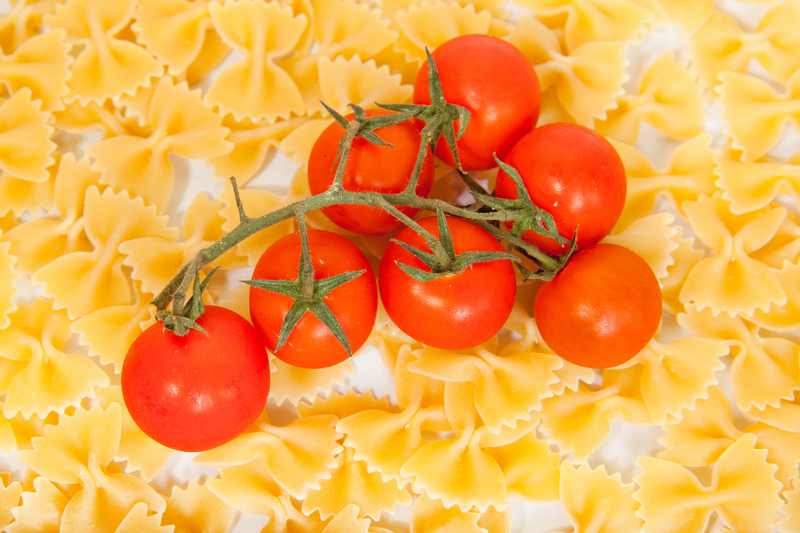 Italian pasta and cherry tomatoes
Italian pasta and cherry tomatoes
Luciano De Crescenzo celebrated the first appearance of the tomato upon Italian tables. Obviously, the Neapolitan writer, having Italian cooking in mind, so sang the praise of the red fruit: “the kitchen filled with light when it came upon our tables, that wonderful product of nature shaped as a bulb.” De Crescenzo went even further, comparing the effect of tomato on Italian cuisine to that of the French Revolution on European society and history.
Matilde Serao, a Neapolitan writer (1856-1927), used creative enthusiasm in her “Leggende Napoletane” (Neapolitan Legends): she describes how maccheroni al pomodoro were created. In the short story “Il Segreto Del Mago,” taking place in the Neapolitan period of 1220, she writes:
“On Saturday nights, Cicho returns to the Cortellaris’house and enters the magician’s little bedroom to keep on cutting his own maccheroni, while Jovanella di Canzio, the angel, stirs tomato sauce with a spoon and the Devil grates cheese with one hand and blows on the fire with the other. Whether it was diabolical or heavenly, Cicho’s discovery created much happiness for all Neapolitans, and there is no sign it won’t do so for many centuries to come.”
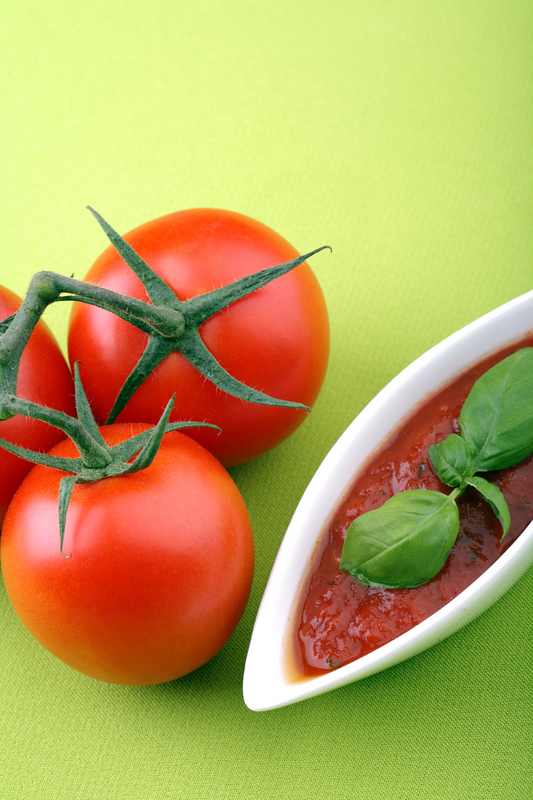 Italian tomato sauce
Italian tomato sauce
The tomato: from ornamental plant to delicious ingredient
The tomato is laced with mysterious qualities having the powers to excite, and being labelled as an aphrodisiac. For these reasons it was used in potions and magic filters by alchemists in the 1500s and 1600s. It is not very clear how or where in Europe this exotic fruit began to be used on the kitchen by some courageous farmers.
In 1640, a nobleman of Tolone gave a gift to Cardinal Richelieu: four tomato plants. Even in France, men used to offer tomato plants as gifts to their dames as an act of love. The tomato plant came from the “New World” and was referred to as “the Love Apple,” translated into many languages as “Pomme d’Amour” (in French) “Liebesapfel” (in German) and “Pomo d’Oro” or apple of gold (in Italian). Each of these definitions refers the tomato as a fruit pertaining to love.
Tomato was first used in the kitchen fresh, crushed and boiled, as in the making of a sauce. This was seen in various parts of Europe in the 17th century. In 1762, techniques for conservation of the tomato were studied by Lazzaro Spallanzani. The fruits were boiled and then placed into closed containers-in this fashion they weren’t altered in any way. In France, they were usually consumed by the courts of the king, but in Italy they were consumed among the whole population. In 1809, Nicolas Appert, a Parisian cook publicized “The Art of Conserving Alimentary Substances of animal and plant origins” and the tomato included in his work.
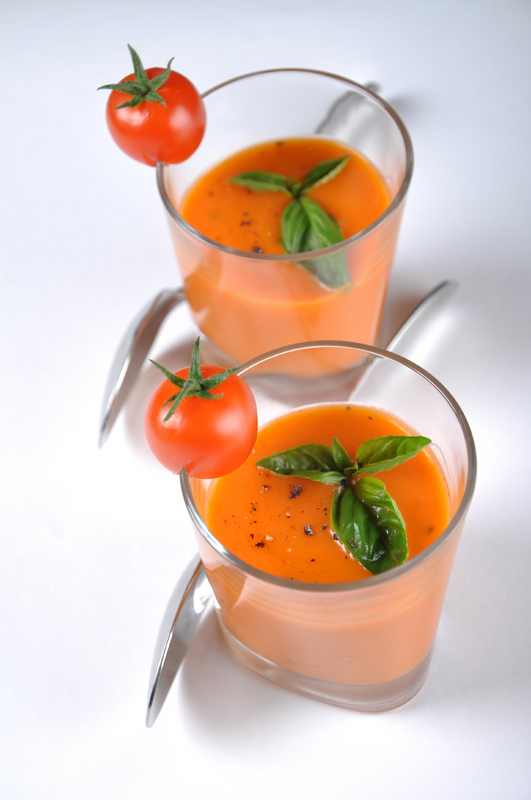 Tomato soup topped with fresh basil
Tomato soup topped with fresh basil
Somewhere in history, it is narrated that a few of Abraham Lincoln‘s (American President) politicians convinced the White House’s cook to prepare a dish using a base of tomato to poison him. Obviously, after the dinner they found out that it did not work. And this gave the tomato its popularity among the wealthy of America and eating tomatoes became one of Lincoln’s pleasures.
The United States were lintroduced to the tomato in the year of 1710. Thomas Jefferson began to cultivate tomatoes in 1809, which made him an original scientist in the tomato-growing industry (and let’s not mention his smuggling of pasta machines). in the US, tomatoes were raved about in speeches, served at dinners, and continued to circulate in recipes, but a great deal of uncertainty was still lingering among the Americans concerning their safety. It proved to be a difficult task to convince the American public that tomatoes were a very safe fruit. But all of their worries were finally over when Colonel Robert Gibbon Johnson told the story which was to wipe fear away.
On the 28th of September 1820, at noon, there he stood in front of the courthouse steps in Salem, New Jersey. He announced that he would eat an entire basket of tomatoes. A countless crowd gathered to view the zany spectacle that was yet to come. He did as promised, and the antsy crowd stood in a sheer terror that shrivelled to amazement as they realized nothing happened to him.
As time went on the tomato was seen by many as a sign of good luck and prosperity. If a tomato was placed on a mantlepiece over the fireplace, it was as a promise of prosperity to the family owning the new home, who eventually would start a new life. Certain times of the year tomatoes were hard to come by, and could not be grown, so in replacement, tomato sized balls of red fabric were stuffed with sand or sawdust and used in the place of the real ones. Comically, a new invention occurred as a result. These filled balls also doubled as pincushions! This was why pincushions were always replicas of the round red tomato.
 Tomatoes enter iconography as pincushions
Tomatoes enter iconography as pincushions
Assume we think of the tomato, this assumption brings us to think of Italian cuisine or Spanish food almost instantaneously. These cultures are not shy of using it in abundance, and it is highly praised by them. This fruit is not lacking in travelling moments. They have even been feared and avoided by many due to their classification in relation to other poisonous plants. Tomatoes have been thought of and closely related to love, and have brought us warmth of color and pleasure with their fragrance-without the tomato we would have never been blessed with that stuffed red cushion that slacks in the memories of so many.
By Jackelin J.Jarvis














